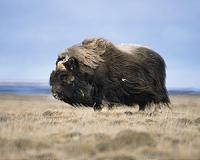| . |  |
. |
Albany CA (SPX) Mar 10, 2010 New research addressing climate change questions, a priority focus of the USDA Forest Service Pacific Southwest Research Station, documents that American pika in the Sierra Nevada and southwestern Great Basin are thriving and persist in a wider range of temperatures than previously discovered. Results were recently published in a paper titled "Distribution and Climatic Relationships of the American Pika (Ochotona princeps) in the Sierra Nevada and Western Great Basin, U.S.A.; Periglacial Landforms as Refugia in Warming Climates," by Constance Millar and Robert Westfall in the February 2010 issue of the journal Arctic, Antarctic and Alpine Research. A small mammalian relative of rabbits and hares, the American pika inhabits rocky slopes of western North American mountains. Pikas tolerate cold climate environments through a combination of physiological and behavioral adaptations where these same adaptations may make them sensitive to even mildly warm climates. Vulnerability of pika habitat to global warming has been an escalating concern, causing speculation that the range of suitable pika habitat will contract upward in elevation as lower elevation site temperatures increase. Millar and Westfall developed and used a rapid assessment method to detect recent presence of American pika in 94 percent of 420 sites in the Sierra Nevada, California, southwestern Great Basin, central Great Basin and central Oregon Cascades ranges. Occurrence and non-detection sites were then compared to pika's habitat affinities to rock formation types and the climatic features of those sites. Rock-ice feature landforms are important habitat components providing insulation and refugia from outside air temperature increases and accounted for 83 percent of the sites. Site climate data indicate that in this study region, pika tolerate a wider range of temperatures and precipitation than previously interpreted. Low elevation populations are usually in relatively warmer locations, so have been thought to be at risk due to rising 20th-21st century temperatures. Millar and Westfall found, however, that 12% of their occupied sites were lower in elevation than the historic (early 20th century) records indicate, revealing that pika live 500 meters (1640 feet) below what was previously known for this region. Results of this study suggest that pikas in the Sierra Nevada and southwestern Great Basin appear to be thriving and tolerating a wide range of thermal environments. This study also suggests a greater distribution in the Sierra Nevada and Great Basin than has been found in other studies in these regions, and provides important baseline surveys that can be used in future pika ecology and population studies.
Share This Article With Planet Earth
Related Links USDA Forest Service, Pacific Southwest Research Station Darwin Today At TerraDaily.com
 Musk Ox Population Decline Due to Climate Not Humans
Musk Ox Population Decline Due to Climate Not HumansUniversity Park PA (SPX) Mar 10, 2010 A team of scientists has discovered that the drastic decline in Arctic musk ox populations that began roughly 12,000 years ago was due to a warming climate rather than to human hunting. "This is the first study to use ancient musk ox DNA collected from across the animal's former geographic range to test for human impacts on musk ox populations," said Beth Shapiro, the Shaffer Career Development ... read more |
|
| The content herein, unless otherwise known to be public domain, are Copyright 1995-2010 - SpaceDaily. AFP and UPI Wire Stories are copyright Agence France-Presse and United Press International. ESA Portal Reports are copyright European Space Agency. All NASA sourced material is public domain. Additional copyrights may apply in whole or part to other bona fide parties. Advertising does not imply endorsement,agreement or approval of any opinions, statements or information provided by SpaceDaily on any Web page published or hosted by SpaceDaily. Privacy Statement |